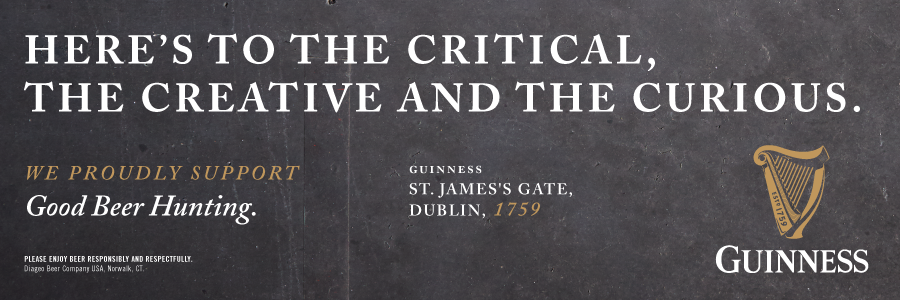My parents owned and ran the Blythe Bridge Chinese Takeaway in the Midlands. It was a constant throughout my childhood, the setting around which much of my life orbited. We lived above the shopfront, and I grew up having family dinner with the kitchen staff before service started, seeing huge tubs of pork being marinated when I arrived home from school. As I got older, I began to work in the takeaway, spending my weekends answering phone calls and packing up orders (to this day, I can still remember that a No. 22 on the menu was a beef with sweet and sour chicken).
My dad had attempted to launch other food businesses before, always in locations where Chinese food wasn’t already being served to avoid competition, which meant we weren’t near other people in our community. One by one, these businesses began and failed, due to combinations of bad timing, financing issues, or residents not being open to trying our food—until my parents launched Blythe Bridge in the early 1990s.
The takeaway was their first success, and it soon became a hub in our town, just southeast of Stoke-on-Trent. I got to know the customers that came through our door when I was still a child, sitting behind the counter and scribbling in my colouring books. When I was a teenager, they would lean over the counter to help me with the maths homework that I struggled with. When I eventually started working at the takeaway, those relationships deepened to the point that I could recognise regulars’ voices on the phone, and remember their usual orders.
My memories aren’t all positive, of course. Having to work meant I missed out on weekend parties, and spending so much time at the takeaway meant feeling disconnected from my British upbringing. My family also dealt with what I would later come to recognise as racism. People would put on a “Chinese” accent on the phone during prank calls, but my dad never said anything back to them, as he couldn’t afford to lose any potential business. I didn’t understand why people were copying how my dad spoke, but now, looking back, I feel sad that he had to put on a brave face.
Mostly, though, we felt like an important part of the area’s rhythms. Regular customers would come in, order their meal, and then say, “Take your time, I’m going across the road.” Opposite our takeaway was a pub, and while we were cooking their dinner, they’d be enjoying a pint before coming back over to pick up their food.
Early on, I sensed that there was something special in the relationship between British beer and the food we cooked, a rare symbiosis. While we didn’t know the landlord and family of the pub, we were still connected in an unspoken link—each fulfilling desires, providing familiarity, our two products companionable and interlinked. It was only when I left Blythe Bridge that I observed how deep that relationship extends—that pubs and East and Southeast Asian cooking have a significant and shared tradition in this country.
I moved to London in 2015. Coming from a town where I was the only person of colour in most settings, I immediately felt at home amidst the diverse mix of cultures and cuisine in the capital. Right on my doorstep was the local fish-and-chip shop; Kurdish food to try for the first time; Cantonese dishes that reminded me of my childhood. But what I wasn’t expecting was to step foot into a pub that looked quintessentially British, only to discover that it served Thai food instead of pork pies.
The Churchill Arms in Kensington is a Fuller’s pub, one that looks exactly like the sort of pub you probably imagine when you think of England. The exterior is famously covered in flowers (and Christmas trees in the winter), attracting tourists visiting nearby Portobello Road. It was built in the 1750s, and was frequented by Winston Churchill’s grandparents. Unexpectedly, it is also widely considered to be the first pub in London with a Thai kitchen, thanks to a chef named “Ben” Songkot Boonyasarayon, as manager James Keogh tells me. “He was running a restaurant in Earl’s Court back in the late ’80s, and he just happened to be a customer of the pub here, and he asked us if we would try Thai food here in the pub,” Keough says.
In the late 1980s, Thai food was still something of a novelty in the U.K. Bangkok on Bhute Street, located in Kensington, was touted as the first Thai restaurant in the country when it opened its doors in 1967. From there, the number of Thai eateries expanded to 300 in the space of 25 years (as of 2019, there were estimated to be more than 1,600 in the country). That rise has come despite the fact that there are still very few Thai immigrants in Britain: In the most recent available census data, within a population of some 63 million people in the U.K., just 47,389 people were Thai.
While there isn’t a definitive list today of how many London pubs have Thai kitchens, they can be found all over the city, from The Pineapple in Kentish Town to The Faltering Fullback near Finsbury Park. Over the river there’s The King’s Arms in Waterloo; up in Stoke Newington, there’s The Coach and Horses. Since the Thai restaurant began at the Churchill Arms, Khoyachai Sampaothong, also known as Paw, has been part of the kitchen staff, and has run it for many years. The kitchen is a family affair. “Two or three people [have] live[d] with me for 22, 25 years,” Paw says. “We work [with] each other like a family, even outside [of work.] They love me, we love them.”
Keogh credits the kitchen’s lasting success to this bond. “They’ve come from Thailand and have settled in London. They’re there to support each other because they’re a long way away from home.” But home is still very much present in the food, Paw tells me. “We have the customer eat the same as I have in Thailand. The taste, the spice. Some people [even] say, ‘I went to Thailand, the dishes here [are] more delicious!”
But it’s not just about replicating those Thai flavours. Chef John Chantarasak, who has British and Thai heritage, spoke to the Sunday Post about the fusion style of cooking he’s come to call Anglo-Thai. “It was actually my grandmother who said to me she wouldn’t use ingredients from Thailand when cooking in the U.K. because that’s not the point,” he said. “The point is to define those Thai flavour profiles and then find the ingredients that correspond with that. That was a wake-up call for me.”
Seeing the success of the Churchill Arms reminded me of that special relationship between my family’s takeaway and the pub across the road. And that relationship between pub settings and Asian cooking isn’t just anecdotal: In a 2021 survey, Chinese cuisine came out on top as the most popular takeaway choice in the U.K., with 25% of respondents picking it over other favourites such as fish and chips or pizza.
But the union between East and Southeast Asian cooking and pints of British Ale hasn’t always been easily accepted, and there are still people who raise an eyebrow, as Keogh tells me. “It’s such an old, traditional pub so I’ll be honest, some people do get a little bit disappointed because they think there should be fish and chips,” he says. When the kitchen at the Churchill Arms first launched, Paw says they served Thai dishes alongside other traditional pub dishes like pork pies, but that didn’t last for long. “When we start[ed], the customers keep ordering the Thai food and we cut down the English menu.” The hybrid menu they started off with is one that I’m familiar with, as roast chicken or steak with chips were some of the most popular dishes at my family’s takeaway.
After working at the pub for nearly 30 years, Paw seems thoroughly in her element. “Some people say, ‘When [will] you retire?’ But I’m happy to work!” she says. I can sense a communal spirit among the cooks, one that seems to extend outwards. Much like the regulars at my family’s takeaway, who would want to know about how my exams were going or where we were off on holiday, Keogh says, “For years I’ve had people come in and say, ‘Oh it’s a while since we’ve been in, we’ve been away,’ and it’s so nice to hear, and you remember these people.”
The combination of Southeast Asian food and British pubs might seem like a surprising duo, but it’s a relationship that I’ve known all my life.
I was born and raised in the U.K. after my parents came over here from Hong Kong in the 1960s, back when it was still a British colony. I flew to Hong Kong every summer holiday when I was growing up, and while it dropped down my list of places to travel as I got older and explored different places, over recent years I’ve been returning to Hong Kong as I excitedly introduced my fiancé to all the sights and delights that I grew up with, including eating at one of the stalls at the Ladies’ Market while enjoying a beer.
My fiancé and I frequent the Churchill Arms, as well as other pubs across London which serve Thai food. We joke—semi-seriously—about how one day we’ll open our own pub that serves Chinese food when we retire. We have visions of cold pints with dumplings, spring rolls and fried fish skin, which is a snack served regularly in Hong Kong cafes and diners, akin to pork scratchings in its savoury crunch. We’ve even come up with a name, The Red Dragon, which we feel fully encompasses his Britishness and my Chinese heritage, bringing together the red cross and dragon legend of St. George (England’s patron saint), and the importance of the dragon in Chinese mythology.
I feel sure that, if we were to open it, it would be immediately popular. Like all these pubs have already proved, East and Southeast Asian cooking and British pub culture is a pairing that just makes sense. But it isn’t just something that works on a culinary level: It demonstrates that we are stronger, and better, when we come together.
















